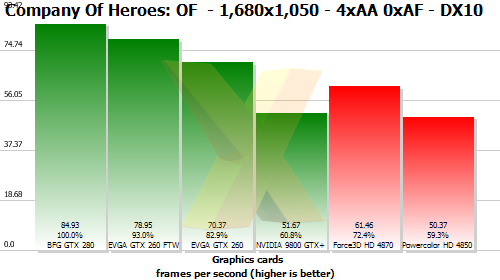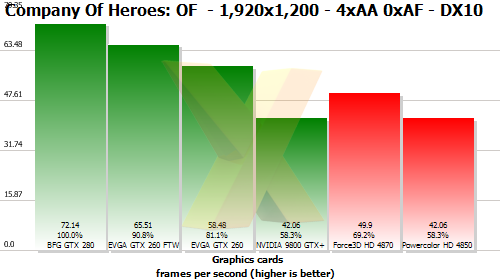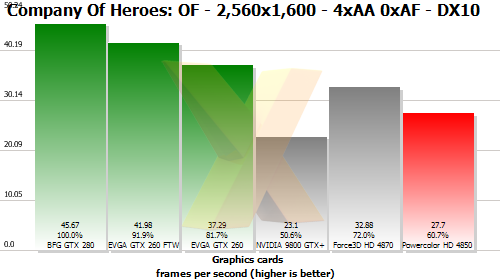Company Of Heroes: Opposing Fronts DX10
Company Of Heroes: Opposing Fronts makes the jump to DX10 for our revised benchmark suite.



In Company Of Heroes: Opposing Fronts, we see the EVGA GTX 260 FTW offer performance right between the stock-clocked GeForce GTX 260 and the GTX 280 GPUs.
The game runs slightly better on NVIDIA cards, with the default-clocked GeForce GTX 260 coming out over 10 per cent faster than the also-stock-clocked Radeon HD 4870.
At 2,560x1,600 resolution both the NVIDIA 9800 GTX+ and the Force3D HD 4870 show unacceptable variances between runs. The GeForce 9800 GTX+ varies between 21.94fps to 25.91fps between runs (15% variance), and the Radeon HD 4870 between 28.78fps and 34.97fps (18% variance), and we reckon it's partly down to a limited framebuffer, 512MB, hurt by a lack of processing muscle. As such, the average results are shown as a rough guide only and should not be taken as truly representative of in-game performance.









